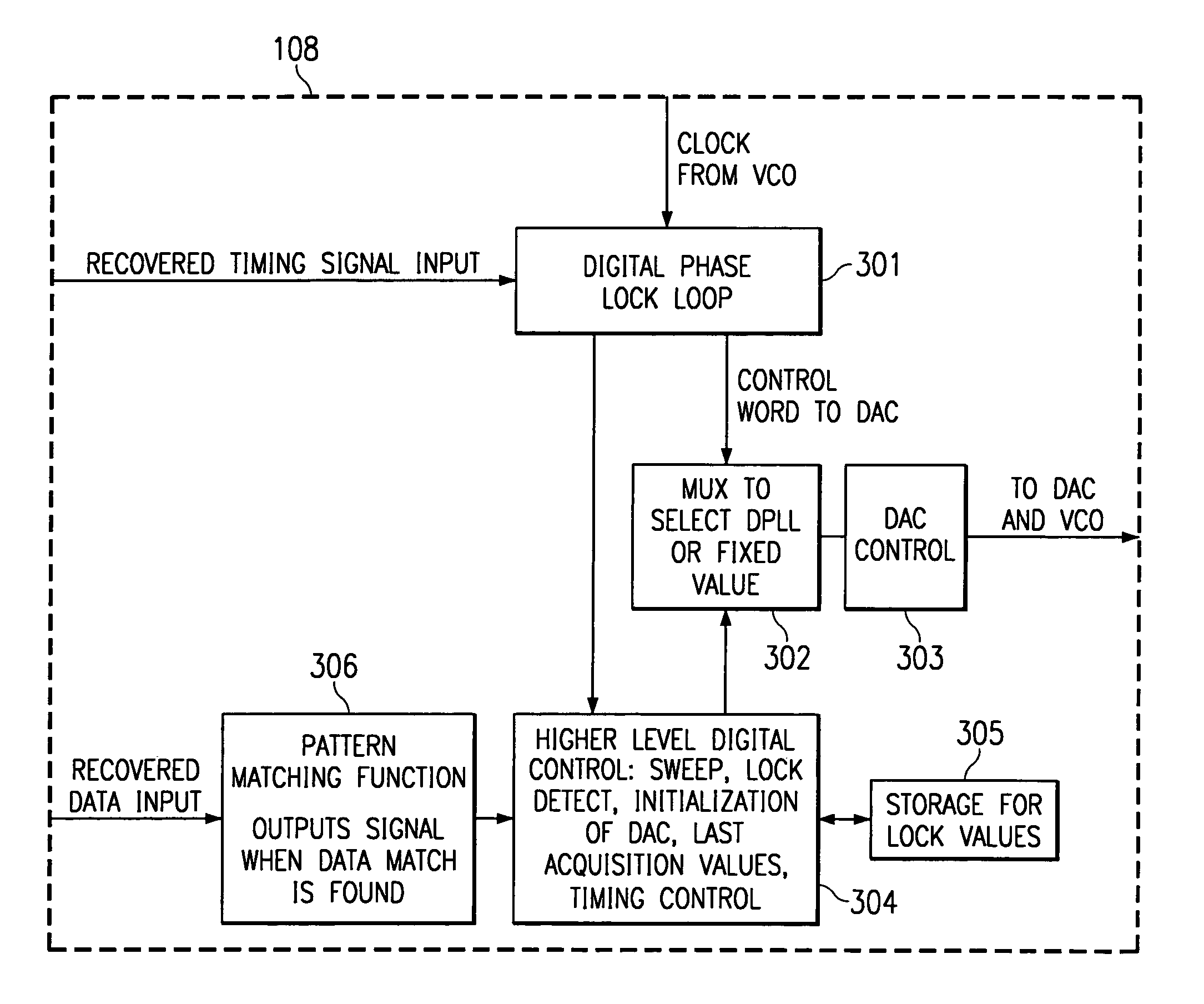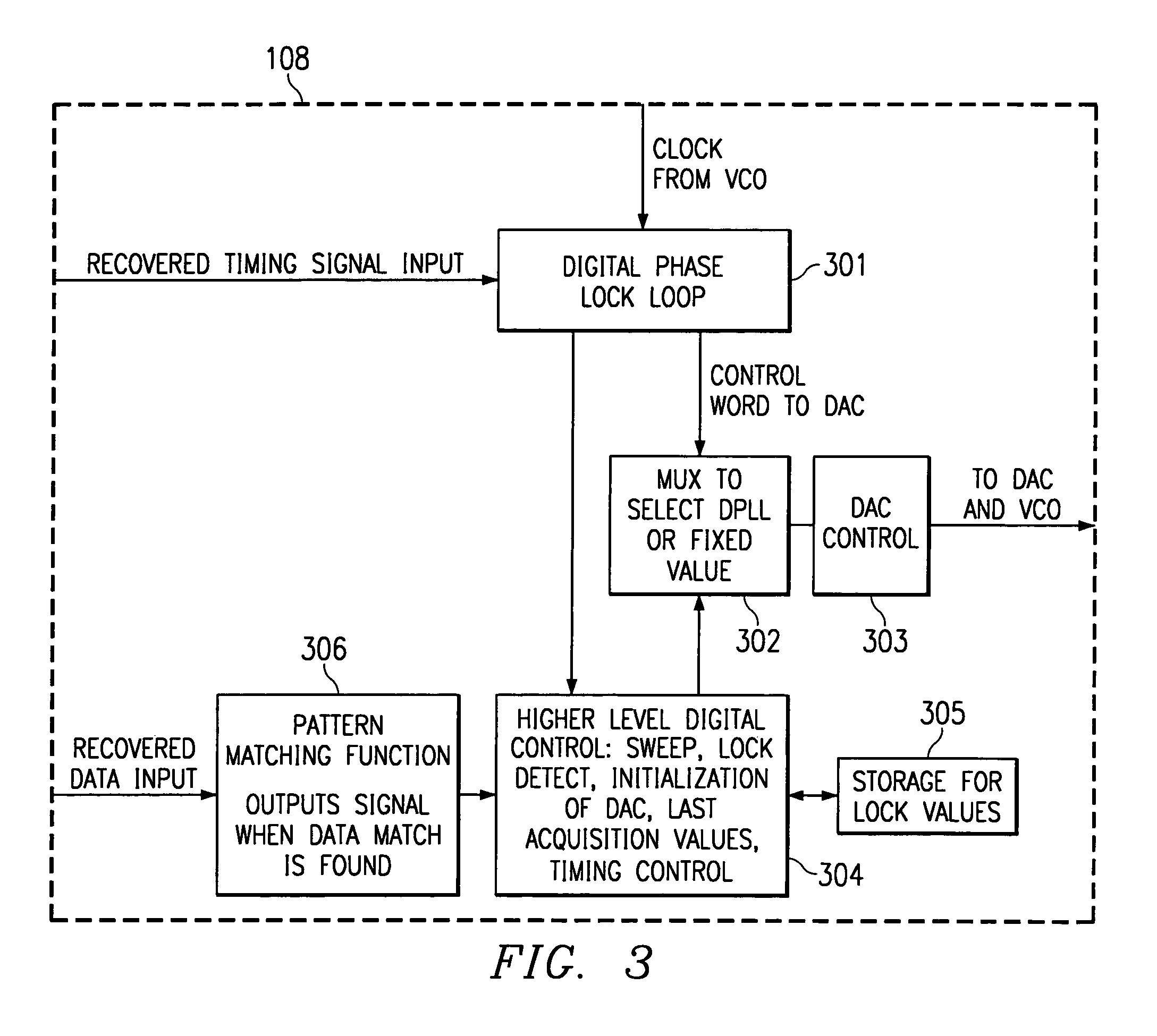Automated frequency compensation for remote synchronization
a remote synchronization and frequency compensation technology, applied in the field of automatic frequency compensation for remote synchronization, can solve the problems of providing a less desirable clock signal, and achieve the effects of reliable remote synchronization, low phase noise, and narrow loop bandwidth
- Summary
- Abstract
- Description
- Claims
- Application Information
AI Technical Summary
Benefits of technology
Problems solved by technology
Method used
Image
Examples
Embodiment Construction
[0034]Directing attention to FIG. 1, an RF receiver circuit adapted according to the present invention is shown having RF front end 101 and demodulator 103. Automatic frequency control (AFC) 100 of the present invention is coupled to a received signal provided by RF front end 101 by mixer 102 to allow demodulator 103 to recover information modulated with a particular carrier frequency. Accordingly, in the preferred embodiment of FIG. 1, a local VCO, which provides a reference frequency, is used to tune a receiver based on a recovered timing signal from the demodulator.
[0035]The preferred embodiment AFC 100 of FIG. 1 includes DAC 104, filter 105, VCO 106, clock signal generator 107, DPLL and control logic 108, and controller 109. VCO 106 provides a controllable reference frequency and is coupled to clock signal generator 107 to operate therewith to provide a controllable clock signal. This controllable clock signal is preferably provided to RF circuitry, such as through mixer 102, to...
PUM
 Login to View More
Login to View More Abstract
Description
Claims
Application Information
 Login to View More
Login to View More - R&D
- Intellectual Property
- Life Sciences
- Materials
- Tech Scout
- Unparalleled Data Quality
- Higher Quality Content
- 60% Fewer Hallucinations
Browse by: Latest US Patents, China's latest patents, Technical Efficacy Thesaurus, Application Domain, Technology Topic, Popular Technical Reports.
© 2025 PatSnap. All rights reserved.Legal|Privacy policy|Modern Slavery Act Transparency Statement|Sitemap|About US| Contact US: help@patsnap.com



